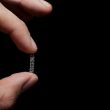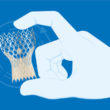This study analyzed 2,493 “real world” patients, 1,352 receiving the Evolut R/Pro, 675 the SAPIEN, 3,270 the Acurate Neo and 192 the Portico. Primary end point was all cause mortality and major adverse cardiovascular events (MACE) at 5 years. Populations were similar, with EuroSCORE 4.9%, and there were no significant differences in comorbidities or echocardiographic...
Quality of Life in Medium-Risk Patients Treated with TAVR vs SAVR
Transcatheter aortic valve replacement (TAVR) and surgical aortic valve replacement (SAVR) have demonstrated similar outcomes in symptomatic aortic stenosis patients (at high or intermediate risk) in terms of 5-year survival. When evaluating the quality of life (QoL) of these two treatment strategies in patients with high surgical risk, there were no significant differences at 5...
TAVR in Bicuspid Valves
Bicuspid aortic valve (BAV) disease affects 1%-2% of the population and manifests with severe aortic stenosis in the middle-aged. It characterizes for a very different anatomy with more calcification than the tricuspid aortic valve. At present, surgical aortic valve replacement (SAVR) is the first treatment indication. TAVR in this scenario has shown, in different studies,...
Reinterventions in TAVR with Self-Expanding Valves
TAVR treatment of severe aortic stenosis is becoming more and more common, showing comparable evolution, or even superior in some studies when using the femoral approach, vs. surgical aortic valve replacement (SAVR). One of the current challenges is TAVR durability vs. SAVR. Even though 9 or 10 years has been deemed acceptable by current standards,...
ACC 2024 | SMART Trial: Self-Expanding or Balloon-Expandable TAVR in Patients with Small Aortic Annulus
Patients with severe aortic stenosis and a small aortic annulus face an increased risk of deteriorated valvular hemodynamic performance and adverse cardiovascular clinical outcomes after undergoing transcatheter aortic valve replacement (TAVR). This study, a prospective multicenter randomized trial, aimed to compare the efficacy and safety of two types of valves: the supra-annular self-expanding EVOLUT (SEV)...
TAVR in the Different Types of Aortic Stenosis
Aortic stenosis (AS) is classified according to gradient into high flow and high gradient (D1), low flow-low gradient with reduced ejection fraction (D2), and paradoxical low flow-low gradient with conserved ejection fraction (D3). D3 AS is characterized by ≥50% ejection fraction, but with systolic volume index ≤35 ml/min. Post TAVR evolution of D2 and D3...
NOTION Trial: 10 Year Outcomes, TAVR vs. SAVR in Low Risk Patients
Transcatheter aortic valve replacement (TAVR) has revolutionized the treatment of patients with severe aortic stenosis (AS). Randomized studies have shown the benefits of TAVR for treating inoperable patients, as well as high and intermediate risk patients. The NOTION (Nordic Aortic Valve Intervention Trial) randomized patients with low risk severe AS to TAVR or SAVR (surgical...
Guidewire Pacing and Pressure Assessment in TAVR: The SAFE-TAVI Study
Currently, the number of transcatheter aortic valve replacement (TAVR) procedures is increasing as it expands towards a lower-risk younger population. Therefore, continuous technological advancement is imperative to reduce post-procedural complications. The Food and Drug Administration (FDA) has approved the SavyWire, a preformed 0.035-gauge guidewire that can perform three essential functions: 1) it facilitates prosthesis transportation...
Use of Transjugular Echocardiography in TAVR
TAVR is a well-established course of treatment, increasingly indicated in lower risk populations. However, one of the challenges associated with self-expanding TAVR, compared against balloon expandable TAVR and SAVR, is the frequent need for definite permanent pacemaker implantation (PPI). High implantation, also known as cusp overlapping (COT), has been shown to reduce the need for...
Post TAVR Long Term Outcomes in Patients with Chronic Inflammatory Disease
Patients suffering from immune-mediated chronic inflammatory disease (CID) face a high risk of developing heart disease, including aortic valve disease. Inflammatory vascular disease when triggered by an autoimmune condition, can prompt a harmful response leading to valve degeneration, with increased calcification and fibrosis, and the associated progression of stenosis, failure or both. Prior research has...









